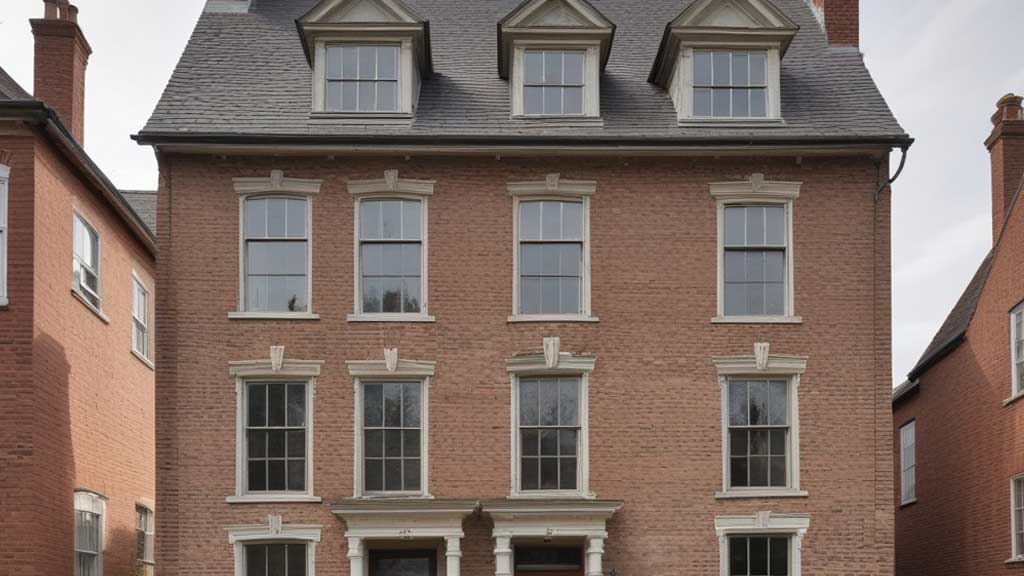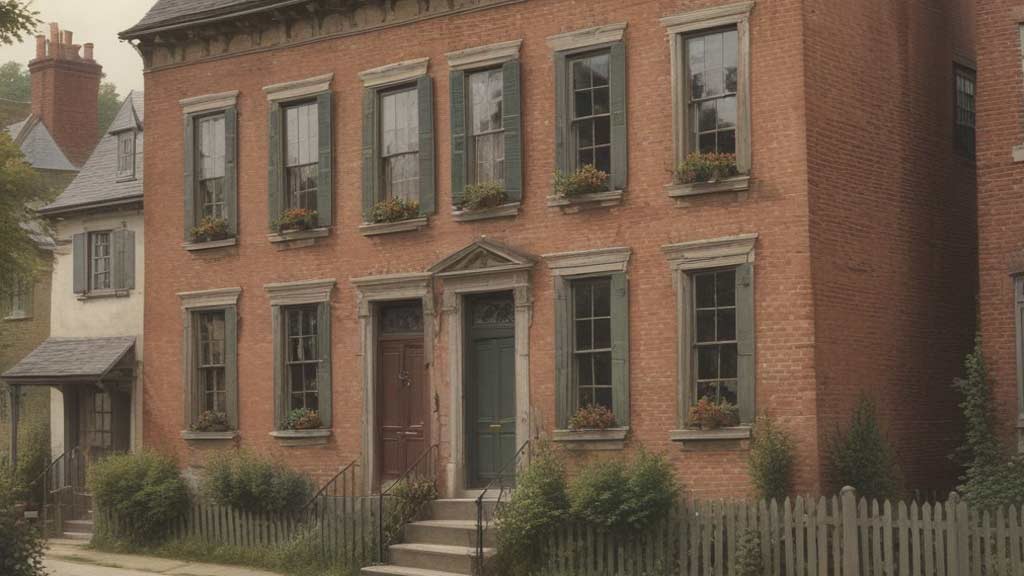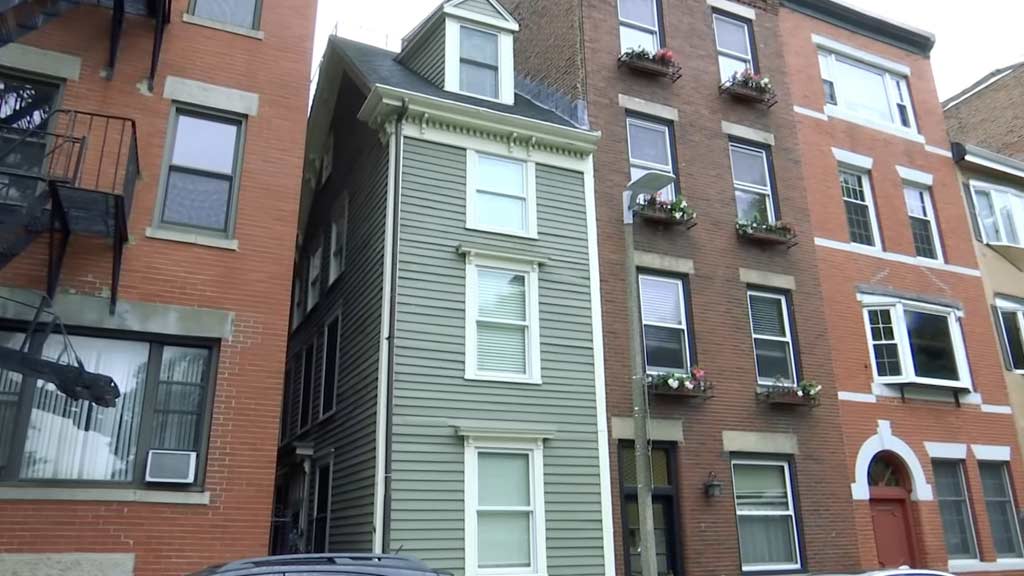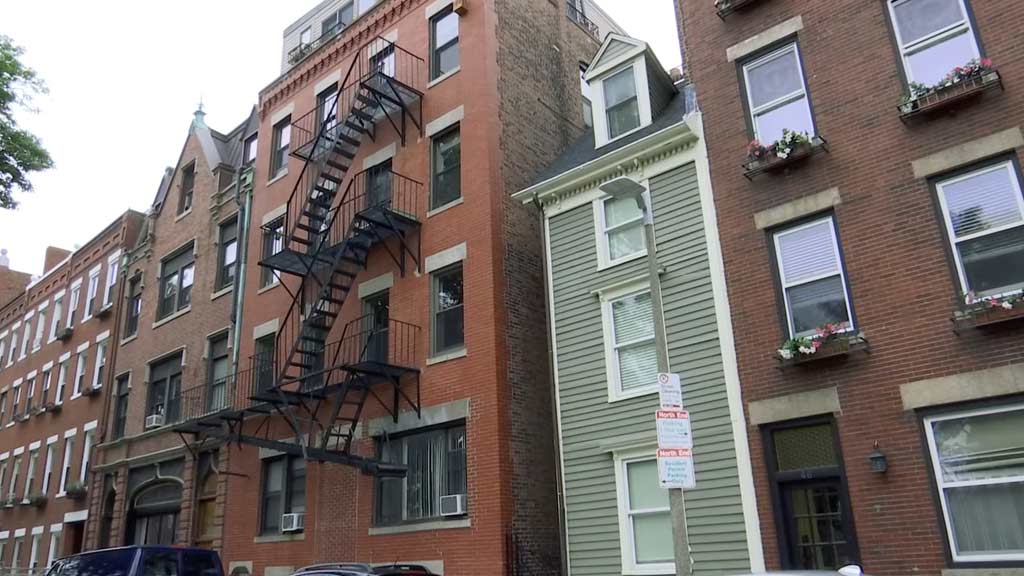In the heart of Boston, Massachusetts, an architectural anomaly stands tall, defying the conventional norms of urban design.
Known colloquially as the Skinny House, this slender structure boasts a fascinating history that has captivated the imagination of locals and visitors alike.
With its narrow width and towering height, the Skinny House stands as a testament to the ingenuity and determination of its builders. But beyond its physical dimensions lies a tale of sibling rivalry, urban legend, and resilience.
As we explore the history of the Skinny House, we uncover layers of intrigue and intrigue that have shaped its identity as a beloved landmark in the bustling cityscape of Boston.
What Is the Skinny House in Boston?
The Skinny House, also known as the Spite House, is a historic landmark in Boston, Massachusetts, renowned for its unusually narrow structure.
Built in 1874, it stands at merely 10.4 feet wide at its widest point, earning its name due to a tale of revenge between two brothers.
Legend has it that after returning from the Civil War, one brother constructed the Skinny House out of spite to block sunlight from his sibling’s property.
Despite its narrowness, the Skinny House has endured as a quirky symbol of sibling rivalry and a testament to Boston’s rich architectural history.
What Is the Story Behind the Skinny House in Boston? -Skinny House Boston History
Amidst the historic streets of Boston, Massachusetts, stands a peculiar structure known as the Skinny House.
With a width of just over ten feet and a height that seems to defy logic, this iconic building has captured the curiosity and imagination of locals and visitors alike. But what is the story behind this slender architectural wonder?
Let’s delve into the intriguing history of the Skinny House and uncover the tales that have made it a beloved landmark in the heart of Boston:
Origins

The origins of the Skinny House date back to the mid-19th century, during a period of rapid urban development in Boston.
The story goes that in 1862, two brothers, William and Patrick O’Brien, returned home from the Civil War to find a plot of land left to them by their deceased father.
Eager to build a home, they agreed to construct a house together on the narrow strip of land.
Sibling Rivalry
Legend has it that tensions arose between the brothers when Patrick left to seek his fortune during the Gold Rush, leaving William to build the house alone.
Upon Patrick’s return, he was dismayed to find that William had built a substantial home, leaving only a tiny strip of land for him.
In an act of defiance, Patrick built a narrow structure on the remaining land, blocking sunlight and views from William’s home.
The Feud
The Skinny House thus became a physical manifestation of the brothers’ bitter rivalry. Standing at four stories tall, it served as both a residence for Patrick and a constant reminder of the discord between the siblings.
The feud between William and Patrick escalated, with legal battles over property rights and attempts to sell the house thwarted by its unconventional size.
Urban Legends and Local Lore

Over the years, the Skinny House has become the subject of numerous urban legends and local lore. Some claim that it was built out of spite, while others believe it was designed to fit the narrow plot of land available.
Regardless of the true motive behind its construction, the Skinny House has captured the imagination of Bostonians, becoming a symbol of perseverance and resilience in the face of adversity.
Preservation and Recognition
Despite its unusual dimensions and contentious history, the Skinny House has endured as a beloved landmark in Boston.
In 1994, it was added to the National Register of Historic Places, ensuring its preservation for future generations to appreciate.
Today, visitors can admire the Skinny House as they stroll through the streets of Boston, marveling at its slender silhouette and the stories it holds within its walls.
What is the Significance of the Skinny House Boston
The Skinny House in Boston holds several significances that contribute to its charm and historical appeal:
Architectural Curiosity

The Skinny House stands as a testament to unconventional architecture in a city known for its historic buildings.
Its slender frame challenges traditional notions of space and design, sparking curiosity and fascination among those who encounter it.
The narrowness of the house defies expectations, prompting questions about how such a structure could have been built and maintained over the years.
Historical Tale of Spite
The legend surrounding the Skinny House adds layers of intrigue and drama to its already captivating presence.
The story of two brothers locked in a feud, with one constructing the house out of spite, captures the imagination and invites reflection on themes of family dynamics and the consequences of conflict.
While the historical accuracy of the tale may be debated, its enduring popularity underscores the house’s significance as more than just a physical structure.
Symbol of Resilience

Despite its modest size and the challenges it has faced over the years, the Skinny House stands as a symbol of resilience and perseverance.
Through changing times and urban development, it has remained steadfast, maintaining its place in Boston’s architectural landscape.
Its survival is a testament to the craftsmanship of its builders and the enduring allure of its unique design.
Cultural Landmark
Over time, the Skinny House has become ingrained in the cultural fabric of Boston, serving as a point of pride for locals and a must-see attraction for visitors.
Its inclusion in city tours, guidebooks, and cultural narratives reflects its status as more than just a building; it is a symbol of Boston’s eccentric charm and rich history.
The house’s cultural significance extends beyond its physical dimensions, embodying the spirit of innovation and individuality that defines the city.
Tourist Attraction
As one of Boston’s most unusual landmarks, the Skinny House draws tourists from around the globe who are eager to experience its unique charm firsthand.
Visitors flock to the house to snap photos, hear its story, and marvel at its slender proportions. Its status as a tourist attraction highlights its universal appeal and the enduring fascination it holds for people of all backgrounds.
In a city filled with historic sites and architectural wonders, the Skinny House stands out as a must-see destination, offering visitors a glimpse into Boston’s rich past and vivid present.
FAQs
How wide is the Skinny House?
The Skinny House measures just over 10 feet wide at its widest point, making it one of the narrowest houses in the United States.
Why is it called the Skinny House?
The Skinny House earned its nickname due to its unusually narrow width and tall height, creating a slender silhouette that stands out in the Boston skyline.
Is the Skinny House a historic landmark?
Yes, the Skinny House was added to the National Register of Historic Places in 1994, recognizing its architectural significance and ensuring its preservation for future generations.
How Much Is the Skinny House in Boston Worth?
The Skinny Houseis worth $1.25 million and measures 10 feet wide at its widest point.
What Is the Most Narrow House in Boston?
The Skinny House is widely regarded as the most narrow house in Boston.
Wrap Up
The Skinny House of Boston stands as a testament to the enduring allure of architectural oddities and the rich tapestry of urban history.
Its slender silhouette and storied past have captured the imagination of generations, inviting speculation and curiosity about its origins and significance.
As a symbol of sibling rivalry, perseverance, and resilience, the Skinny House serves as more than just a quirky landmark it embodies the human experience, with all its complexities and contradictions.
Through preservation efforts and continued appreciation, this historic gem will continue to intrigue and inspire, reminding us of the enduring power of storytelling and the enduring legacy of those who came before us.
Jaclyn Lowe